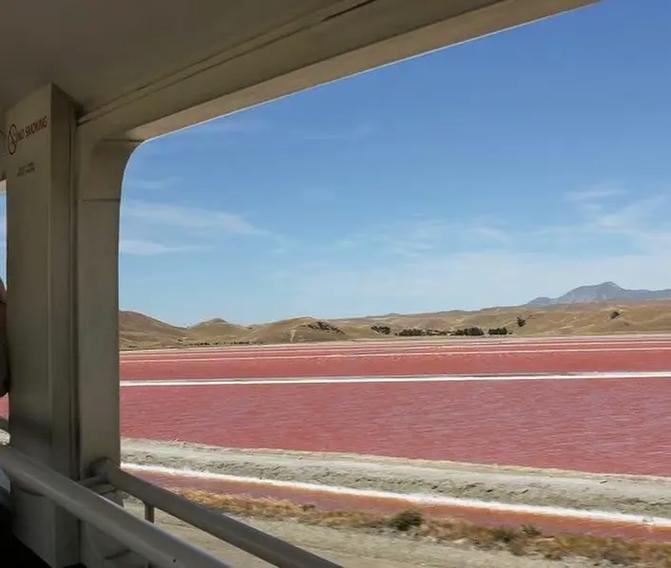Global Travel Information
Lut Desert, Iran
The Lut Desert: Iran’s Otherworldly Landscape of Extremes
Nestled in the southeastern corner of Iran, the Lut Desert, or Dasht-e Lut, is a land of superlatives. It is one of the hottest and driest places on Earth, a vast expanse of surreal landscapes that seem plucked from the imagination of a science-fiction writer. Spanning over 51,000 square kilometers, this UNESCO World Heritage Site is a study in extremes—scorching temperatures, towering sand dunes, and enigmatic rock formations that defy conventional understanding of deserts.
A Land of Record-Breaking Heat
The Lut Desert holds the record for the highest surface temperature ever recorded on Earth. In 2005, NASA’s satellite measurements detected a staggering 70.7°C (159.3°F) in the Gandom Beryan plateau, a region within the desert. This scorching heat is due to a combination of factors: the dark volcanic rocks that absorb sunlight, the lack of vegetation to provide shade, and the desert’s low elevation, which traps heat like an oven.
Unlike other deserts, where nights bring relief, the Lut remains oppressively hot even after sunset. The ground, baked by the sun, radiates heat back into the air, creating an environment where survival for humans and most animals is nearly impossible without adaptation.
A Landscape Sculpted by Wind and Time
The Lut Desert is not just a barren wasteland—it is a dynamic, ever-changing canvas shaped by relentless winds. One of its most striking features is the kaluts, or yardangs—massive ridges of rock carved by centuries of wind erosion. These formations stretch for kilometers, resembling a petrified city with towering skyscrapers of sand and stone. Some kaluts rise over 150 meters, creating a labyrinthine terrain that has fascinated geologists and adventurers alike.
Equally mesmerizing are the desert’s sand dunes, some of the tallest in the world. The Rig-e Yalan dunes soar up to 300 meters, their crests shifting with the wind. Unlike the golden dunes of the Sahara, the Lut’s sands take on a reddish hue, a result of iron oxide weathering over millennia.
Life in the Barren Expanse
At first glance, the Lut appears lifeless, but it harbors a surprising array of resilient organisms. Hardy desert shrubs, lichens, and salt-tolerant plants cling to existence in the rare pockets where moisture collects. The desert’s wildlife is equally adapted to the harsh conditions—foxes, snakes, and insects have evolved to survive with minimal water, often emerging only at night to avoid the searing daytime heat.
One of the most remarkable inhabitants is the Iranian ground jay, a bird species found nowhere else on Earth. These agile birds navigate the desert’s extremes with ease, foraging for seeds and insects in the sparse vegetation.
Human Interaction and the Mysteries of the Lut
Despite its inhospitable nature, the Lut Desert has not escaped human influence. Ancient caravan routes once skirted its edges, connecting Persia to the Indian subcontinent. Today, the desert remains a place of intrigue for scientists studying climate change, geology, and extremophile life forms.
Local communities, such as the nomadic tribes of Kerman and Sistan-Baluchestan provinces, have adapted to the desert’s fringes, relying on qanats (underground aqueducts) to sustain agriculture. Yet, much of the Lut remains untouched, its mysteries still waiting to be uncovered.
The Allure of the Unknown
For adventurers, the Lut Desert is both a challenge and a revelation. Expeditions into its heart reveal landscapes that feel alien—vast salt flats, cracked mud polygons, and star-filled skies unobscured by light pollution. The silence is profound, broken only by the whisper of the wind.

Scientists continue to explore the Lut’s secrets, from its role in understanding Earth’s climate history to the potential for discovering new extremophile species. For travelers, it offers a rare glimpse into a world where nature’s raw power is on full display.
Conclusion
The Lut Desert is a testament to the extremes of our planet—a place where fire and wind have sculpted an environment unlike any other. Its haunting beauty and scientific significance make it one of Iran’s most extraordinary natural wonders. For those brave enough to venture into its depths, the Lut offers not just a journey through a desert, but a passage into Earth’s untamed soul.
相关文章
- Elbe River Archaeological Sites: Ancient Finds Near the Water
- Elbe River Botanical Gardens: Flowers & Plants Along the Banks
- Elbe River Zoos & Aquariums: Family Fun Near the River
- Elbe River Amusement Parks: Rides with River Views
- Elbe River Camping Spots: Pitch a Tent by the Water
- Elbe River Glamping Sites: Luxury Camping Along the Banks
- Elbe River RV Parks: Stay in Your Camper Near the River
- Elbe River B&Bs: Cozy Accommodations with a Personal Touch
- Elbe River Hostels: Budget Stays for Young Travelers
- Elbe River Business Travel Guide: Meetings & Events Near the Water
发表评论
评论列表
- 这篇文章还没有收到评论,赶紧来抢沙发吧~


